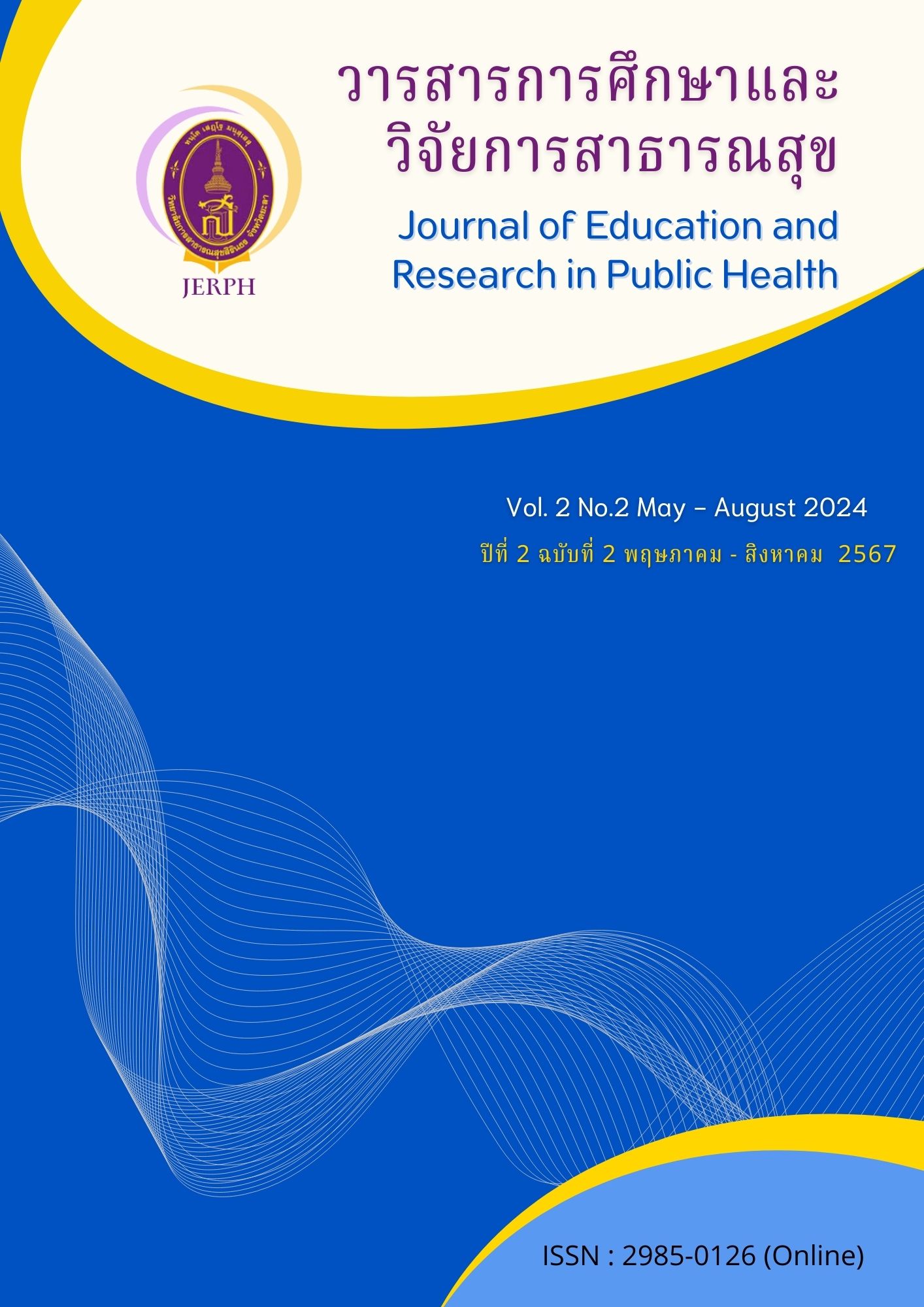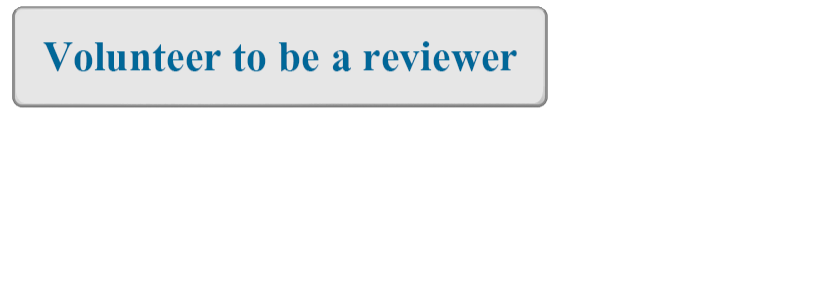Effectiveness of Intensive Occupational Therapy at Home in Stroke Patients
Keywords:
Rehabilitation in stroke patients, Intensive occupational therapy, Home hand training programAbstract
This study was a quasi-experimental research. The purpose of the research was to study the effectiveness of intensive occupational therapy training in stroke patients. The sample was obtained using purposive sampling, divided into two groups, each consisting of 30 patients. In the experimental group, the patients attended the intensive occupational therapy program and resumed training at home, with weekly phone call follow-ups. The control group participated exclusively in the standard program at the clinic. Both groups attended the training sessions for 60 minutes a day, 3 days a week, for 12 weeks. The Motor assessment scale (MAS) and the modified barthel activities of daily index (MBAI) measurements were adopted before and after the program. General data were analyzed by using descriptive statistics. The Wilcoxon signed-rank test and the Mann-Whitney U test were employed to compare within and between groups, respectively. It was found that in each group, the medians of MAS and MBAI, before and after the program, were significantly different (p-value < 0.05). However, when the MAS and MBAI between the two groups were compared, it was shown they were not significantly distant. Intensive occupational therapy training at home among stroke patients can increase the strength of their arms and hands and enhance the performance of their daily activities. In cases patients are inconvenient to access services at the hospital, they can bring the program to practice at home. This is to increase the patient’s accessibility to rehabilitation services and improve the patient’s daily activity performance.
Downloads
References
กรมควบคุมโรค สำนักโรคไม่ติดต่อ. ประเด็นสารรณรงค์วันอัมพาตโลก ปี 2562. สืบค้นเมื่อ 18 พฤศจิกายน 2566 จาก https://ddc.moph.go.th/uploads/files/78a5b91d92a079c1a35867c6347a9299.pdf.
สมศักดิ์ เทียมเท่า. อุบัติการณ์โรคหลอดเลือดสมองในประเทศไทย. วารสารประสาทวิทยาแห่งประเทศไทย. 2565; 39(2): 39-46.
โรงพยาบาลอุดรธานี. รายงานสถิติผู้ป่วยโรคหลอดเลือดสมอง. อุดรธานี. 2566.
ทศพร บรรยมาก. กิจกรรมบำบัดสำหรับผู้ที่มีปัญหาด้านระบบประสาท. พิมพ์ครั้งที่ 3. กรุงเทพฯ, ออเร้นท์กรุ๊ปเทคนิคดีไซด์. 2557. หน้า 123-43.
ศรารินทร์ พิทธยะพงษ์. สถานการณ์ ปัญหา และอุปสรรคการดูแลผู้ป่วยหลังการเกิดโรคหลอดเลือด สมองระยะเปลี่ยนผ่านจากโรงพยาบาลสู่บ้าน.วารสารพยาบาลสภากาชาดไทย. 2561; 11(2): 26-39.
Bureau of policy and strategy. Ministry of Public Health. Statistical. Accessed 25 October 2023 from https://ghdx.healthdata.org/organizations/bureau-policy-and-strategy-ministry-public-health-thailand.
ภัทรา วัฒนพันธุ์. การฟื้นฟูสภาพผู้ป่วยโรคหลอดเลือดสมองและการป้องกันภาวะแทรกซ้อน. วารสารประสาทวิทยาศาสตร์ภาคตะวันออกเฉียงเหนือ. 2556; 1-35.
ปรีดา อารยาวิชานนท์. การฟื้นฟูผู้ป่วยโรคหลอดเลือดสมอง. สรรพสิทธิ์เวชสาร. 2559; 37(1-3): 1-16.
Nascimento LR, Rocha RJ, Boening A, Ferreira GP, and Perovano MC. Home-based exercises are as effective as equivalent doses of centre-based exercises for improving walking speed and balance after stroke: a systematic review. Journal of Physiotherapy. 2022; 68(3): 174-8. DOI: 10.1016/j.jphys.2022.05.018.
Toh SFM, Chia PF, and Fong NK. Effectiveness of home-based upper limb rehabilitation in stroke survivors: A systematic review and meta-analysis. Frontier in Neurology. 2022; 13: 964196. DOI: 10.3389/fneur.2022.964196.
Sartor MM, Grau-Sánchez J, Guillén-Solà A, Boza R, Puig J, Stinear C, and et al. Intensive rehabilitation programme for patients with subacute stroke in an inpatient rehabilitation facility: describing a protocol of a prospective cohort study. BMJ Open. 2021; 11(10): e046346. DOI: 10.1136/bmjopen-2020-046346.
Jafari J, Kermansaravi F, and Yaghoubinia F. The effect of home-based rehabilitation on adherence to treatment and quality of life of individuals after stroke. Medical-Surgical Nursing Journal. 2020; 9(2): e107716. DOI: 10.5812/msnj.107716.
บรรณฑวรรณ หิรัญเคราะห์, สุภาภรณ์ ด้วงแพง, และฉันทนา จันทวงศ์. ประสิทธิผลของโปรแกรมการพยาบาลในการฟื้นฟูสมรรถภาพที่บ้านสำหรับผู้ป่วยโรคหลอดเลือดสมองตีบต่อการทำหน้าที่ การรับรู้ภาวะสุขภาพ และคุณภาพชีวิตที่เกี่ยวข้องกับสุขภาพ. วารสารวิจัยทางวิทยาศาสตร์สุขภาพ. 2560; 11(2): 28-37.
ผกามาศ พิริยะประสาธน์, กรอนงค์ ยืนยงชัยวัฒน์, นพพล ประโมทยกุล, และกฤษณา ครุฑนาค. ผลของการทำกายภาพบำบัดที่บ้านในผู้ป่วยโรคหลอดเลือดสมองระยะเรื้อรังที่ไม่ได้รับการฟื้นฟูแล้ว: การศึกษาเบื้องต้น. ธรรมศาสตร์เวชสาร. 2562; 19: 48-54.
Chen S, Lv C, Wu J, Zhou C, Shui X, and Wang Y. Effectiveness of a home-based exercise program among patients with lower limb spasticity post-stroke: A randomized controlled trial. Asian Nursing Research. 2021; 15(1): 1-7. DOI: 10.1016/j.anr.2020.08.007.
อัญชลี พันธุ์แก้ว, สุทธิพงษ์ ทิพชาติโยธิน, ประเสริฐพร จันทร, เกรียงศักดิ์ ม่วงสุนทร, พัชรินทร์ พุทธรักษา, สมลักษณ์ เพียรมานะ, และคนอื่นๆ. ความน่าเชื่อถือของแบบประเมิน Motor Assessment Scale ฉบับภาษาไทย ในการประเมินการทำงานของแขนและมือในผู้ป่วยโรคหลอดเลือดสมอง. เวชศาสตร์ฟื้นฟูสาร. 2550; 17(1): 20-5.
บุษกร โลหารชุน, ปานจิต วรรณภิระ, จินตนา ปาลิวนิช, และกัญญารัตน์ คําจุน. ความน่าเชื่อถือของการประเมินผู้ป่วยอัมพาตจากโรคหลอดเลือดสมองด้วยแบบประเมิน modified barthel index ฉบับภาษาไทย. พุทธชินราชเวชสาร. 2551; 25(3): 842-50.
กองบริหารสาธารณสุข กระทรวงสาธารณสุข. คู่มือการฟื้นฟูสมรรถภาพระยะกลาง สำหรับบุคลากรทางการแพทย์ ตามแผนพัฒนาระบบบริการสุขภาพ. สืบค้นเมื่อ 18 พฤศจิกายน 2566 จาก https://www.snmri.go.th/snmri-e-library/.
วาริสา ทรัพย์ประดิษฐ์, ขวัญประชา เชียงไชยสกุลไทย, นำพร สามิภักดิ์, และชัชวลัย สนธิกุล. จำนวนชั่วโมงการทำกายภาพบำบัดที่ส่งผลต่อการเปลี่ยนแปลงความสามารถในการทำกิจวัตรประจำวันในผู้ป่วยโรคหลอดเลือดสมองระยะกึ่งเฉียบพลัน. วารสารกายภาพบำบัด. 2565; 44(1): 1-11.
ภาพวิจิตร เสียงเสนาะ, และเฟื่องฟ้า ขอบคุณ. การทบทวนวรรณกรรม การฟื้นฟูผู้ป่วยโรคหลอดเลือดสมองในด้านการเดินการทรงตัว การใช้งานแขนและมือด้วยการฝึกแบบเฉพาะเจาะจง. วารสารสมาคมโรคหลอดเลือดสมองไทย. 2565; 21(2): 26-43.
Waddell KJ, Strube MJ, Tabak RG, Joshu DH, and Lang CE. Upper limb performance in daily life improves over the first 12 weeks post-stroke. Neurorehabilitation and Neural Repair. 2019; 33(10): 836-47. DOI: 10.1177/1545968319868716.
อนุชัย พึ่งพระรัตนตรัย. ผู้ป่วย Stroke กับ Golden Period ตอนที่ 1 เวลาทองของการฟื้นฟู. สืบค้นเมื่อ 18 พฤศจิกายน 2566 จาก https://pt.mahidol.ac.th/knowledge/?p=1971.
Kamalakannan S, Gudlavalleti VM, Prost A, Natarajan S, Pant H, Chitalurri N, and et al. Rehabilitation needs of stroke survivors after discharge from hospital in India. Archives of Physical Medicine and Rehabilitation. 2016; 97(9): 1526-32. DOI:10.1016/j.apmr.2016.02.008.
เกศริน เอมกวิชัย. ผลของโปรแกรมการดูแลผู้ป่วยสูงอายุโรคหลอดเลือดสมองและผู้ดูแลระยะเปลี่ยนผ่าน จากโรงพยาบาลสู่บ้านต่อความสามารถในการปฏิบัติกิจวัตรประจำวัน การกลับมารักษาซ้ำ และความสามารถในการดูแลผู้ป่วยของผู้ดูแล โรงพยาบาลทั่วไป แห่งหนึ่งของภาคใต้. [วิทยานิพนธ์]. ปริญญาพยาบาลศาสตรมหาบัณฑิต, คณะพยาบาลศาสตร์, มหาวิทยาลัยสงขลานครินทร์. 2564.
Soares C, Magalhães JP, Faria-Fortini I, Batista LR, Andrea LL, and Faria CD. Barriers and facilitators to access post-stroke rehabilitation services in the first six months of recovery in Brazil. Disability Rehabilitation. 2024; 1-7. DOI: 10.1080/09638288.2024.2310756.
Bernocchi P, Vanoglio F, Baratti D, Morini R, Rocchi S, Luisa A, and et al. Home-based telesurveillance and rehabilitation after stroke: a real-life study. Topics in Stroke Rehabilitation. 2016; 23(2): 106-15. DOI:10.1080/10749357.2015.1120453.
Downloads
Published
How to Cite
License
Copyright (c) 2024 Journal of Education and Research in Public Health

This work is licensed under a Creative Commons Attribution-NonCommercial-NoDerivatives 4.0 International License.






